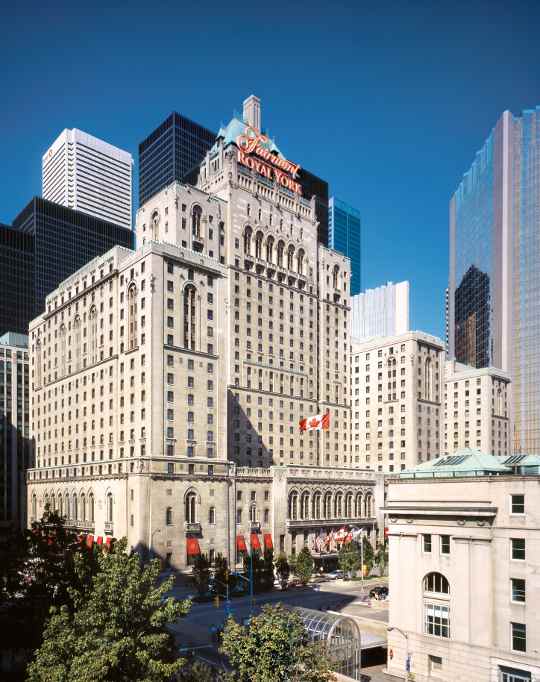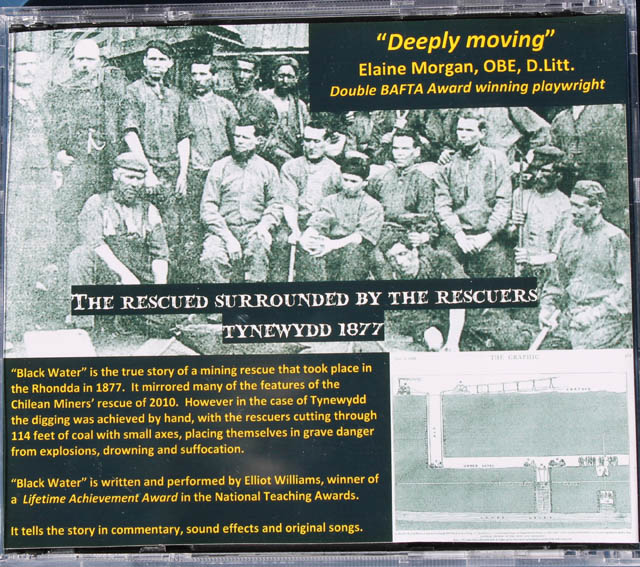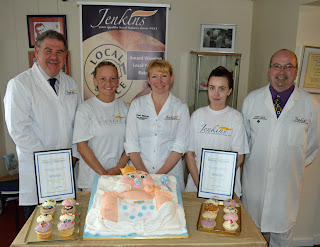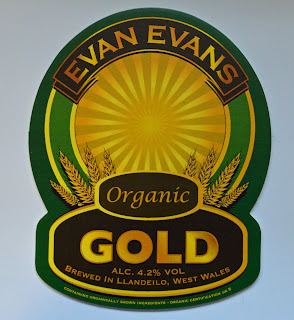Blogs
PUTTING YOUR TALENT TO THE TEST
The Eistdeddfod has long been a storied tradition in Wales and, since 1994, at the North American Festival of Wales as well. Thus, every year we run competitions in singing and (poetic) recitation, mostly with a focus on the language of heaven, i.e., Welsh, and offer cash prizes and trophies to the winners. At the same time, simply competing has proven to be an award in itself as experienced, professional-caliber adjudicators offer a very meaningful,personal critique to each competitor to help them in continuing to cultivate their innate and developing talents. This year, we are lucky to have among our adjudicators the Three Welsh Tenors, who already are performing on Thursday, August 29, at the NAFOW Opening Concert but also have graciously offered their time and wealth of experience - for our two Solo Voice competitions (see below).
The recitation competitions include Youth Recitation (with a set piece in English), Learners' Recitation (for adults relatively new to Welsh, with a set piece in Welsh) and Adult Recitation
(for adults with some demonstrated Welsh proficiency, also with a set piece in Welsh). The Learners' category is new for 2013, as we aim to draw on a burgeoning interest shown by people learning the language through the online resource, Say Something in Welsh, as well as other learners.
On offer for the singing competitions are Hymn Singing, Solo Voice and Solo Voice/Semi- professional. Hymn Singing involves a single piece in Welsh, while the others involve two pieces each where at least one must be in Welsh. The Solo Voice/Semi-professional competition is distinct in offering the David Morris Memorial Award, which includes a cash prize to send the winner to compete where it all began... at the next National Eisteddfod in Wales ! Several Morris winners have gone on to great success in Wales, including Catrin Rowenna Davies, who won first prize in Mezzo-soprano at the National in Vale of Glamorgan just last year.
We would love to see you come and compete... you never know where it might lead ! It is certainly as much fun as it is rewarding. As is the custom, our winners will also perform at an
Eisteddfod Concert on Saturday, August 31, which is normally very well-attended and well-received.
For more information, see NAFOW Program Eisteddfod
or send an email to Alan Upshall or Ian Samways at eisteddfod@nafow.org.
Ian K. Samways
The Fairmount Royal York Hotel Toronto,
venue of the North American Festival of Wales 2013
Died this day 1197
Rhys ap Gruffydd (The Lord Rhys) Ruler of the kingdom of Deheubarth from 1155 to 1197
1155 Rhys became ruler of Deheubarth after the death of his brother Maredudd and married Gwenllian ferch Madog, daughter of the prince of Powys
1158 Rhys met with King Henry II of England to discuss peace terms, which resulted in Rhys being dispossessed of most of his land.
1159 With Henry II away in France, Rhys attacked Dyfed, laid siege to Carmarthen and captured Llandovery castle.
1163 Henry II returned from France and invaded Deheubarth, stripped Rhys of his lands and took him prisoner.Later he was released and given back a small part of his holdings.
1164 Rhys and Owain Gwynedd united in an uprising. Henry invaded Wales again but torrential rain forced Henry's army to retreat in disorder and Rhys won back most of his lands. Henry had Rhys's son Maredudd blinded and in reprisal Rhys burned down Cardigan Castle
1167 Rhys and Owain attacked southern Powys and besieged the Norman castle of Rhuddlan, also destroying the Norman Castle at Builth.
1170 The death of Owain Gwynedd left Rhys as the acknowledged leader of all the Welsh princes.
1171 Henry II now wished to make peace with Rhys. Rhys was to pay a tribute of 300 horses and 4,000 head of cattle but was confirmed in possession of all the lands he had taken from Norman lords.
1172 Henry and Rhys met once more at Laugharne, and Henry appointed Rhys "Justiciar for South Wales". From then on Rhys and Henry maintained good relations.
1176 Rhys held a festival of poetry and song at his court at Cardigan which is generally regarded as the first recorded Eisteddfod.
1189 Henry II died and was succeeded by Richard I. Rhys considered that he was no longer bound by the agreement with Henry and attacked the Norman lordships in Pembroke, Haverfordwest and Gower, also capturing the castles of St Clears, Laugharne and Llansteffan.
1196 Rhys launched his last campaign against the Normans and captured the castles at Carmarthen, Colwyn, Radnor and Painscastle.
1197 Rhys died and was buried in St David's Cathedral.
Rhys had been the dominant ruling prince in Wales for more than forty years. He built Cardigan Castle, which was the earliest recorded native-built stone castle in Wales, as well as castles at Carreg Cennen near Llandeilo and Aberdyfi. He founded the religious houses of Talley Abbey and Llanyr nunnery and was the patron of the abbeys of Whitland and Strata Florida.
Born this day 1758 in Westmoreland county, Virginia ( his mother, Elizabeth Jones, was Welsh)
James Monroe - the fourth President of the United States. He was elected president in 1817 and is remembered for the Monroe Doctrine, as well as for acquiring Florida from Spain. He died on Independence Day 4th July 1831 .
The Monroe Doctrine, introduced in 1823, prohibited European nations from colonising land in America.
Born this day 1831 in Ruperra Castle, Glamorganshire,
Godfrey Charles Morgan, 1st Viscount Tredegar.
During the Crimean War, he took part in the famous Charge of the Light Brigade that rode into the 'Valley of Death' at the Battle of Balaclava, which both he and his horse 'Sir Briggs' survived. He became a benefactor to the people of Newport, donating large tracts of land to the Corporation for the benefit of the public. A statue of Viscount Tredegar was unveiled in 1909 in Gorsedd Gardens, Cardiff.
Born this day 1959 in Newbridge, near Caerphilly,
Steve Strange (born Steven John Harrington) pop singer, best known as the lead singer and frontman of the 1980s pop group Visage.
Born this day 1899 in Splott, Cardiff.
Len Davies, former Wales international soccer international. He remains the record goalscorer for Cardiff City, with 128 goals and was a member of the 1927 FA Cup winning side.

Died on this day 1584,
David Lewis , born in Abergavenny in 1520 was a lawyer and personal advisor to Queen Elizabeth I. He was also Member of Parliament for Monmouthshire, and a Judge of the High Court of Admiralty. He was one of the founding members of Jesus College, Oxford and, on 27th June 1571, became its first Principal.
On this day in 1997, the SWALEC Cup final between Cardiff and Swansea was the last ever match to be played at the National Stadium in Cardiff.
* The National Stadium was often mistakenly referred to as Cardiff Arms Park, which is the smaller ground next door where Cardiff Rugby Club play .
* Work commenced in July 1968 and it was officially opened on 7 April 1984 .
* It holds the world record for a rugby union club match when a crowd of 56,000 watched the 1988 Schweppes Cup final between Llanelli and Neath.
* It held the first evening game to be played under floodlights on 4 September 1991 between Wales and France.
On this day in 1930, Dylan Thomas made the first entry into his poetry notebooks while he was still a pupil at Swansea Grammar School. The first poem, dated 27 April, is entitled "Osiris, come to Isis."
Born this day 1947 in Swansea,
Pete Ham , who was a rock singer, songwriter and guitarist, best remembered as lead singer of the 70's rock group Badfinger. He also co-wrote the ballad "I Can't Live (If Living Is Without You)" a worldwide Number One hit for Harry Nilsson for which he won two Ivor Novello Awards.
Born this day 1963 in Swansea,
Stephen Russell Davies OBE , better known as Russell T Davies, a television producer and screenwriter whose credits include Queer as Folk, Torchwood, Casanova and the 2005 revival of Doctor Who.
Born on this day 1928 in Fochriw near Caerphilly,
Selwyn Hughes , a Welsh Christian minister who was well know for producing the daily devotional 'Every Day with Jesus'. George Carey, the former Archbishop of Canterbury, described Hughes as a "giant in the faith".
THE DRAMATIC STORY OF THE TYNEWYDD MINING DISASTER 1877 TOLD IN WORDS, SOUNDS AND ORIGINAL MUSIC
Diolch to Lawrence Evans for bringing this to our attention. I dont know if it is still available for purchase but If I discover that it is I will post here. There is a selection of tracks from the CD on the YouTube channel linked below. For more detail about the Tynewydd Disaster go here and here .
This channel showcases a few tracks from the CD "BLACK WATER" about the Tynewydd Mining Disaster 1877 written by Elliot Williams.
The popular Jenkins Bakery has scooped two prizes in national competitions.
The Llanelli-based bakery was successful in the The National Association of Master Bakers' bakery competitions at the Bakers' and Butchers' Spring Fair at the Three Counties Showground in Malvern.
"It's a double delight for us as a business," said operations director Russell Jenkins.
"What is particularly pleasing is that the wins went to two of our youngest members of staff.
"We believe in nurturing young talent here at the Jenkins Bakery and the two winners created top quality showpiece products to beat off stiff competition from the rest of the UK."
Natasha Fuge's winning design at the Spring Fair was in the Celebration Cake category and was inspired by impending birth of Duke and Duchess of Cambridges baby.
Trainee Alex Cowell won first for her cupcakes.
And Alex also won a special prize of a training day with television's Fabulous Baker Brothers at their Cotswolds HQ.
The prizes were picked up at the Spring Fair by Sarah Williams, cake department manager at the Jenkins Bakery, who received the honours on behalf of the team from the National President of the National Association of Master Bakers, Christopher Freeman, and TV personality Christine Hamilton.
Photos above:
The winning Celebration Cake design.
The wining cupcakes.
Sarah Williams, cake department manager at the Jenkins Bakery, received the honours on behalf of the team from the National President of the National Association of Master Bakers, Christopher Freeman, and TV personality Christine Hamilton.
Natasha Fuge, Sarah Williams and Alex Cowell.
Russell Jenkins, Natasha Fuge, Sarah Williams, Alex Cowell and Kevin Field, bakery manager.
The Jenkins bakery employs 280 people, full and part-time, across 26 different stores in South Wales.
The company has the Gold Standard Welsh Food Hygiene Award and the Investors in People award.
The business employs 70 people at its Trostre HQ, while the Jenkins shop network stretches from Carmarthen to Bridgend. There are 14 shops in Carmarthenshire and even one as far afield as Powys.
The company celebrated its 90th anniversary in 2011.
Website -
http://jenkinsbakery.co.uk/
Two young Welsh brewers have brought home the top brewing honours at the International Brewing awards, otherwise known as the brewing industry Oscars.
Voted top organic brewers in the world, for their Evan-Evans Organic Gold, James Buckley and Sajan Muthanna were identified as two of the top brewers at the International Brewing Awards 2013.
Bill Taylor, Head of the International Judging panel, said:
There were almost 1,000 beers in the competition from all over the world and to win a medal is to be recognised as being at the pinnacle of brewing excellence.
This is a competition judged by brewers from all over the world and provides a platform for top brewers to showcase their brewing excellence and skills.
James Buckley, 24, and Sajan Muthanna, 26, are brewers at Evan-Evans Brewery, in Llandeilo, South Wales.
James is the seventh generation of Waless oldest brewing family, the Buckley family, who have brewed in Wales since 1767.
Sajan Muthanna, a native of Bangalore, joined Evan-Evans having graduated from the international brewing and distilling university, Herriot Watt in Edinburgh.
Simon Buckley, chief Executive of Evan-Evans, said:
Those that doubt that the brewing and pub industry has a future should look at these two young men, who so early in their brewing careers have achieved the ultimate achievement of a gold medal at the Brewing Oscars.
This is a very proud moment for us as a brewery, a family, and for Wales.
With beers entered from brewers all over the world, this is an incredible achievement for James and Sajan. The gold medal was won through hard work, dedication and attention to detail. The beer was an example of the very best of British brewing.
James Buckley said:
It is a great honour to win this award and we go home to Wales with a sense of great achievement, pride, and a gold medal to share with our team back at the brewery.
This award was a team effort. Organic Gold is a new style of beer brewed using the finest organic raw materials. We are now proud to say it is the finest organic beer in the world.
Evan-Evans is a specialist brewer, based in Llandeilo. The company has a group of award-winning pubs. The Buckley family have brewed beer in Wales since 1767 and are one of the oldest brewing families in the UK, still brewing.
www.evanevansbrewery.com
On this day 1717 the pirate ship Whydah was shipwrecked, with Welshman Thomas Davis one of only two survivors
Originally a slave ship, the Wydah was captured by the pirate "Black Sam" Bellamy for use as his flagship. Equipped with its 28 cannons and a crew of 146 as his pirate flagship, Bellamy and his crew raided from coast to coast, until a violent storm off Cape Cod blew it on to a sandbar, where it broke apart and sank with nearly four and a half tons of gold, gold dust, silver and jewellery on board.
Only two men survived, carpenter Thomas Davis, a Welshman, and a Miskito Indian called John Julian.
The wreck was discovered in 1984 and more than 200,000 individual pieces have since been retrieved, including the ship's bell.
Born this day 1957 in Cardiff
John Sloman rock artist , best remembered as lead vocalist for Uriah Heep between 1979–1981.
Born this day 1937 in Brecon,
Gareth Gwenlan , television producer, who is best known for his work on comedy series such as To The Manor Born, The Fall and Rise of Reginald Perrin and Only Fools and Horses. In 1983 he was appointed BBC Head of of Comedy.
Died on this day 2011,
Islwyn Morris , who was born in Swansea in 1920, was an actor and director, best remembered for his roles in Welsh-language television, especially Pobol Y Cwm. He also appeared in English-language programmes, with roles in The District Nurse, Z Cars and High Hopes.
Having been in Toronto for the mid-year board meeting of the Welsh North American Association, I can tell you first hand what a fantastic hotel the Fairmont Royal York is. We are so lucky to have it as the location of this years North American Festival of Wales. The historic hotel, right in downtown, is world-class. Each year our festival is held in a different location and this year, both the hotel and the city set it apart from previous festivals. The group rate is fantastic and it is an opportunity not to be missed.
While there, we were able to tour the hotel and the meeting space and the festival will be held in magnificent function rooms with painted ceilings, where kings, queens and dignitaries often attend events. This years entertainment includes an Opening Concert with the Three Welsh Tenors, a Grand Banquet with National Eisteddfod winner Catrin Davies and a Grand Concert with the most celebrated Welsh Male Voice choir, Cor Meibion Pontarddulais. A festival not to be missed!
 Fairmont Royal Oak Hotel - Toronto Canada
Fairmont Royal Oak Hotel - Toronto Canada
Fairmont Royal Oak Hotel - Toronto Canada ( Lobby )
Born this day 1284 in Caernarfon Castle
Edward II King of England, 1307-27 the youngest son of Edward l and Eleanor of Castile.
In 1301, he was made Prince of Wales in the Lincoln parliament, the first English prince to be given the title He was also given control of Llywelyn ap Gruffydd's lands in Gwynedd and the allegiance of all those lords who owed their titles to Llewelyn.
During Edward's defeat in 1314 by the Scots at the Battle of Bannockburn, Gilbert de Clare, Lord of Glamorgan, was killed and succeeded by his brother-in-law, Hugh le Despenser the elder, his son Hugh le Despenser the younger becoming the new favourite of Edward II.
The War of the Barons against Edward II, led by Roger Mortimer of Wigmore, was an attempt to break the influence of the Caerphilly Despensers on the king, but it failed, with the Despensers now effectively ruling England.Their appetite for land was voracious, with Hugh le Despenser the Younger accumulating lordships which encompassed almost the entire southern coast of Wales.
In 1323 Roger Mortimer of Wigmore escaped from Tower of London and fled to France where he formed an allegiance with Edward's estranged wife, Isabella.They became lovers and plotted to raise an army to overthrow Edward.
Isabella and Mortimer arrived in England in 1326 with their army and met with minimal resistance. Edward II and the younger Despenser fled to Caerphilly Castle. They were later captured near Llantrisant and imprisoned in Monmouth Castle. Despenser was tried and executed at Hereford, whilst Edward II was taken to Kenilworth Castle in Warwickshire and later Berkeley Castle in Gloucestershire.
In 1327, Gruffydd ap Rhys, lord of Dinorwig and Tregarnedd and Sir Rhys ap Gruffydd, lord of Narberth along with thirteen prominent men of Wales led an unsuccessful plot to free Edward from Berkeley.
1327 In January Edward II agreed to resign his crown in favour of his son Edward and in September Edward II was murdered.
A legacy of Edward's reign, was that Roger Mortimer made himself lord of huge territories in Wales, he had himself named earl of March and the Welsh Marches became his power base.
Born this day 1927 in Ystrad, Rhondda,
Ernest Zobole , who was a painter and art teacher, was described as one of Wales' "most important artists." His paintings reflected the industrial setting of the Rhondda Valleys.
On 25th April 1283 the constable of Castell y Bere surrendered after a siege by the army of Edward I who were seeking the capture of Dafydd ap Gruffudd, who had escaped to Dolbadarn Castle in Snowdonia.
After Llywelyn ap Gruffudd's death in 1282, his brother Dafydd had become Prince of Wales and was on the run from Edward I who had the heartland of independent Wales ringed with a massive army.
John Poyer was a Parliamentary soldier during the English Civil War, who later rebelled and was executed for treason on 25th April 1649 .
Initially a prosperous merchant, mayor and Governor of Pembroke Castle, Poyer raised a force on behalf of Parliament, defending the castle against the Royalists. When, in 1647, he was commanded to disband his army and surrender Pembroke Castle, he refused, claiming that he was owed money. He joined a Royalist rebellion which lost at the Battle of St Fagans.
Poyer, along with fellow rebels Laugharne and Powell, fled to Pembroke, where they were besieged by Oliver Cromwell and forced to surrender on 11 July 1648 . Poyer was executed at Covent Garden in London.
On 25th April 1915 during the landing on V Beach, Gallipoli, Able Seaman William Charles Williams from Chepstow secured the safety of landing craft while under continuous enemy fire . He was killed by a shell and was described by his commander as the bravest sailor he had ever met. He was posthumously awarded the Victoria Cross - the first such award made to a member of the Royal Navy.
James Relly, born in Jeffreyston, near Tenby in Pembrokeshire. (c.1722– April 25 , 1778) was a Methodist minister who adopted Universalism and among whose converts in 1770 was John Murray, the founder of Universalist churches in America.
Universalists believe that God did not create the human race knowing that we are destined for eternal damnation.
Born on this day 1923 in Newport,
Paul Whitsun-Jones , a character actor notable for appearances in the TV series Z-Cars, The Saint, The Avengers, Some Mothers Do Ave Em, Doctor Who and The Persuaders.
Born on this day 1929 in Machen near Caerphilly,
Malcolm Thomas - former Wales rugby captain . A centre, he played club rugby for Newport. He was capped for Wales on 27 occasions and was selected to play in the British Lions on two tours of Australia and New Zealand.









